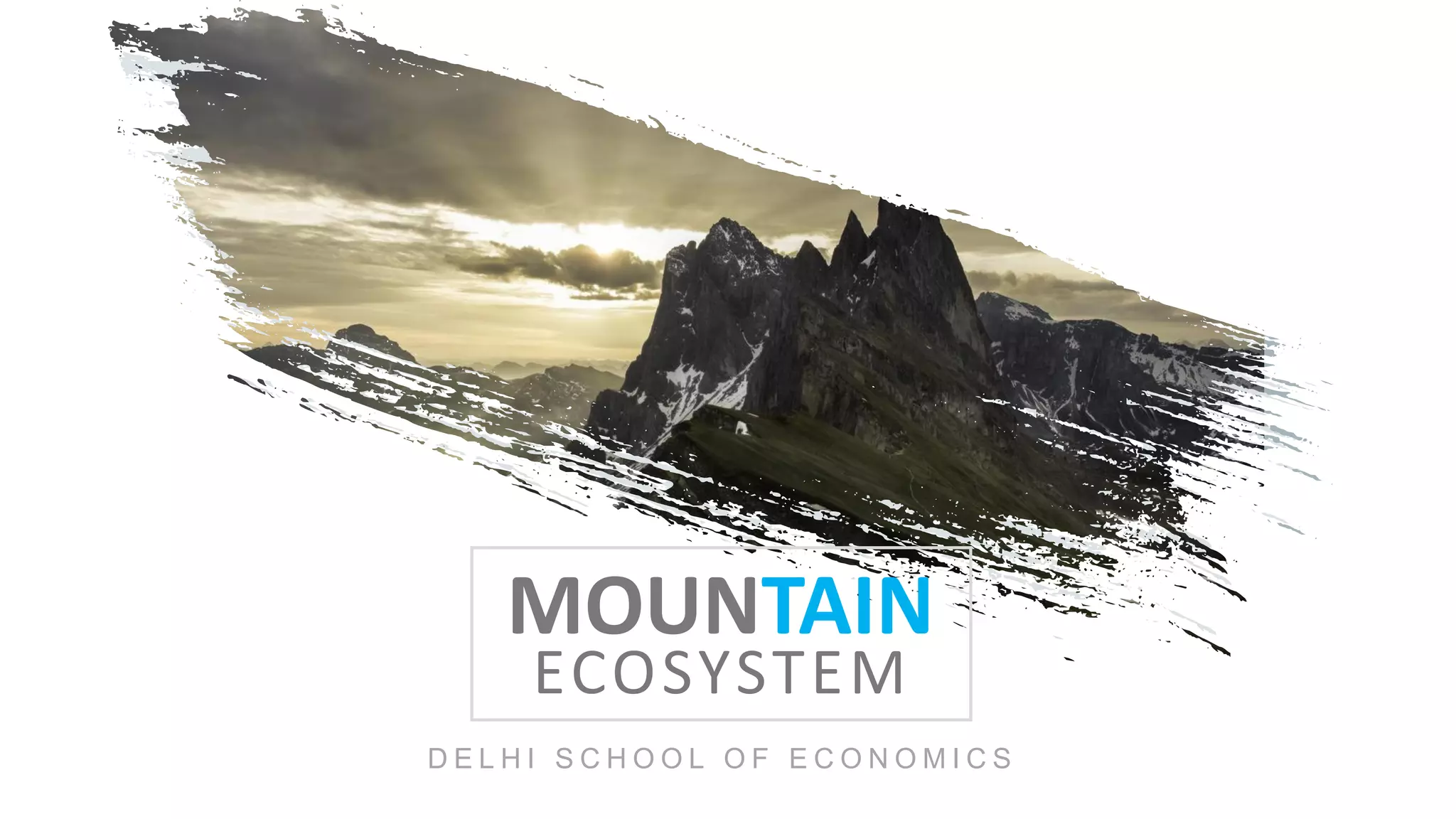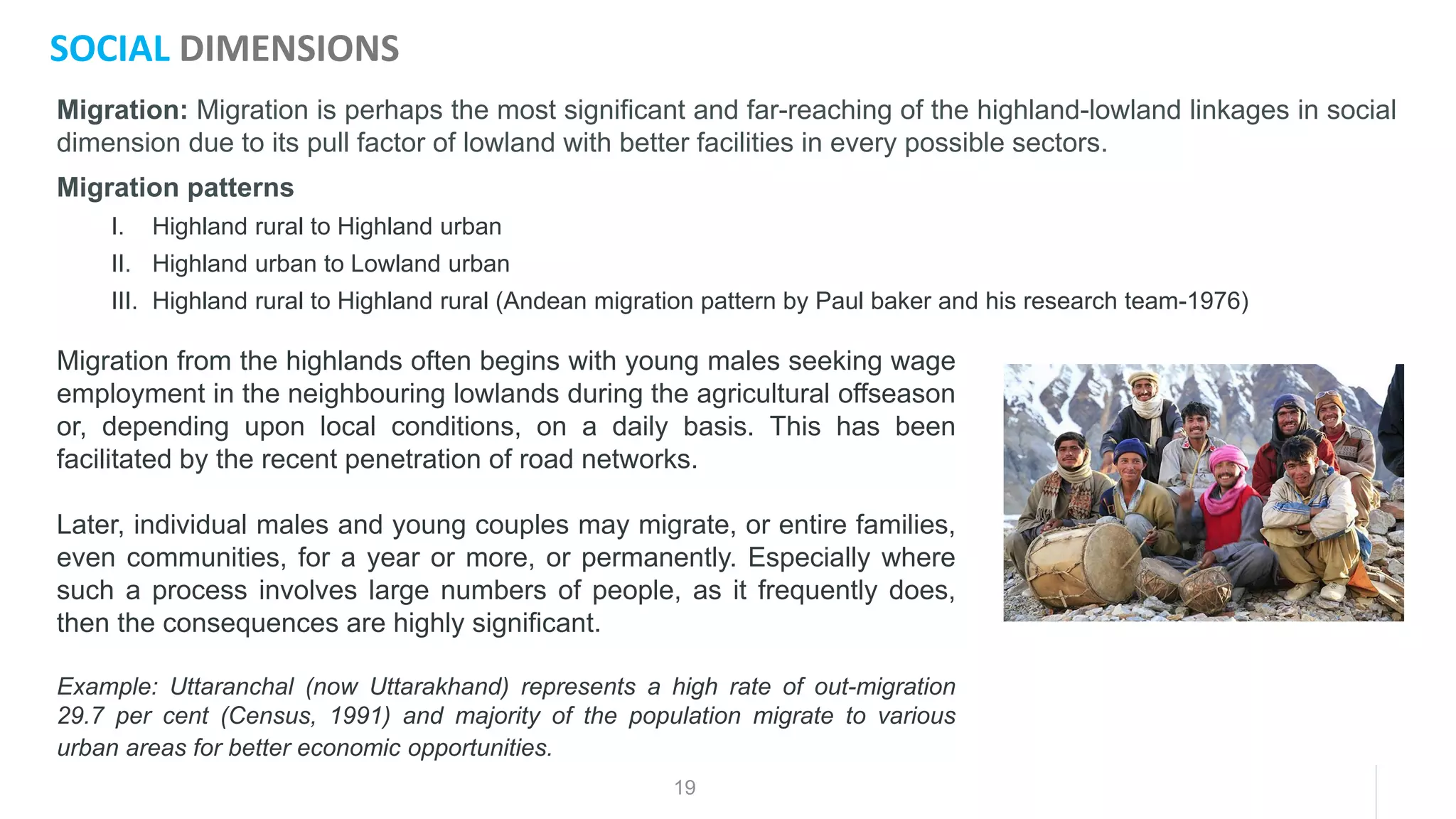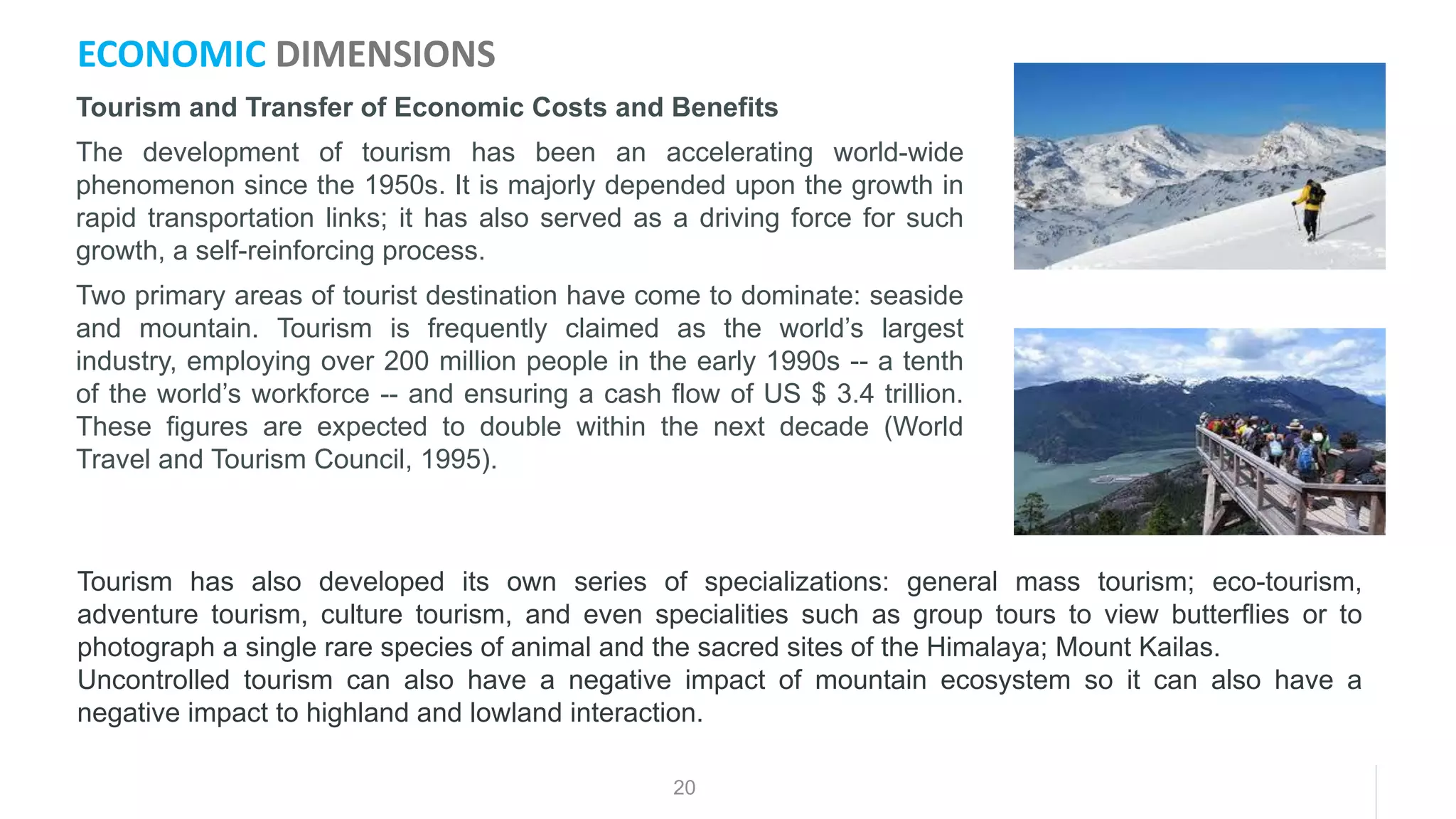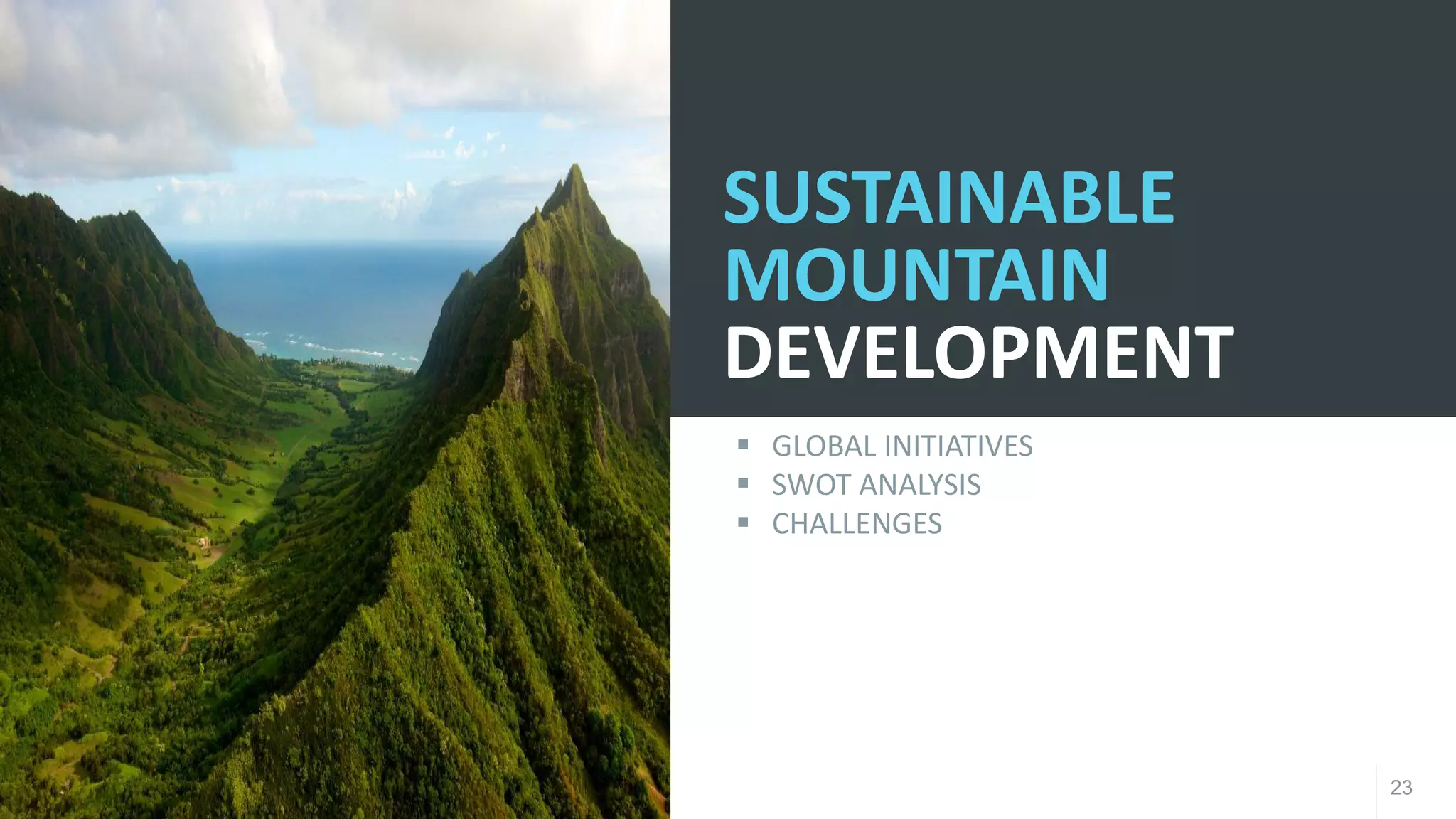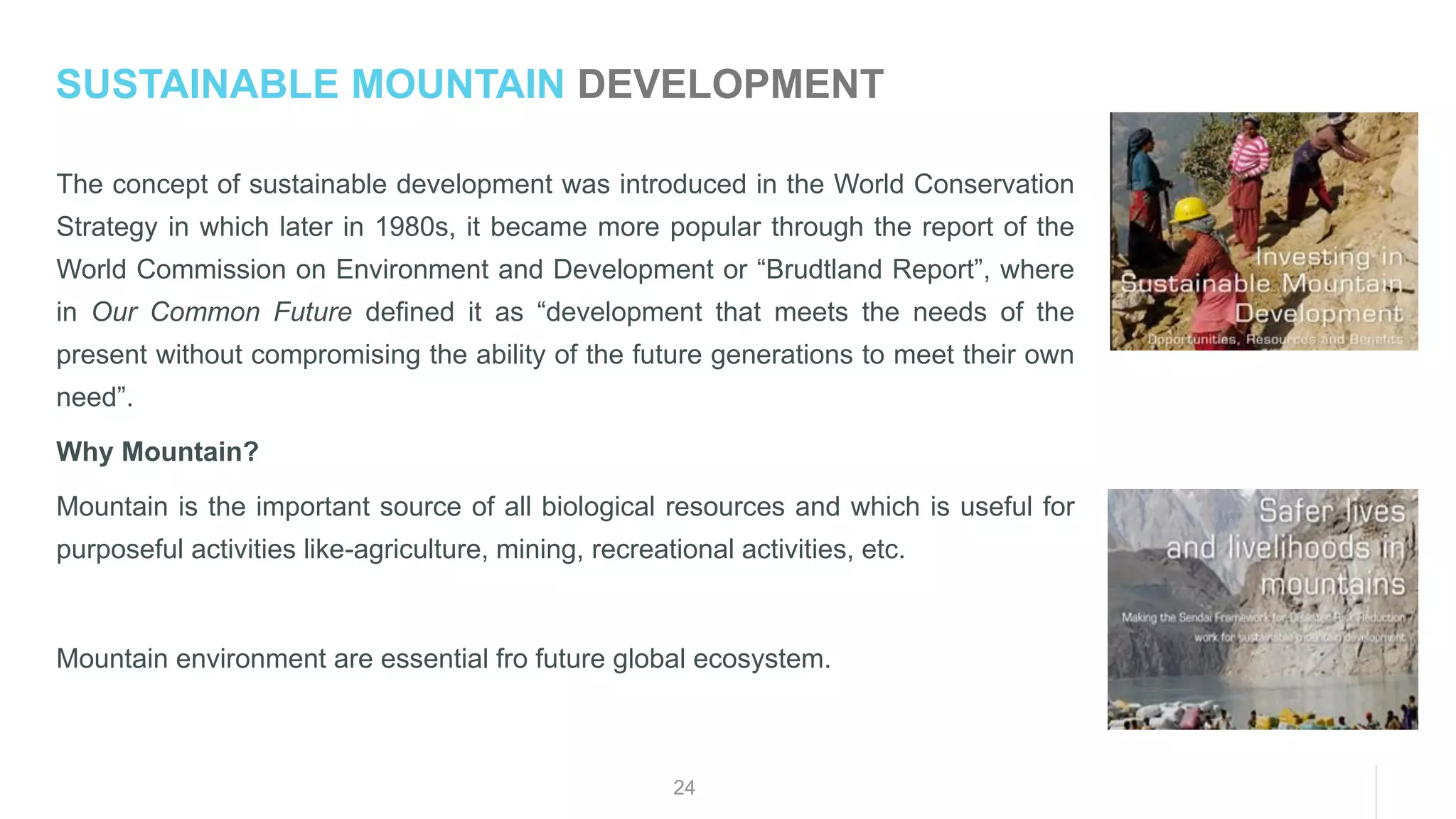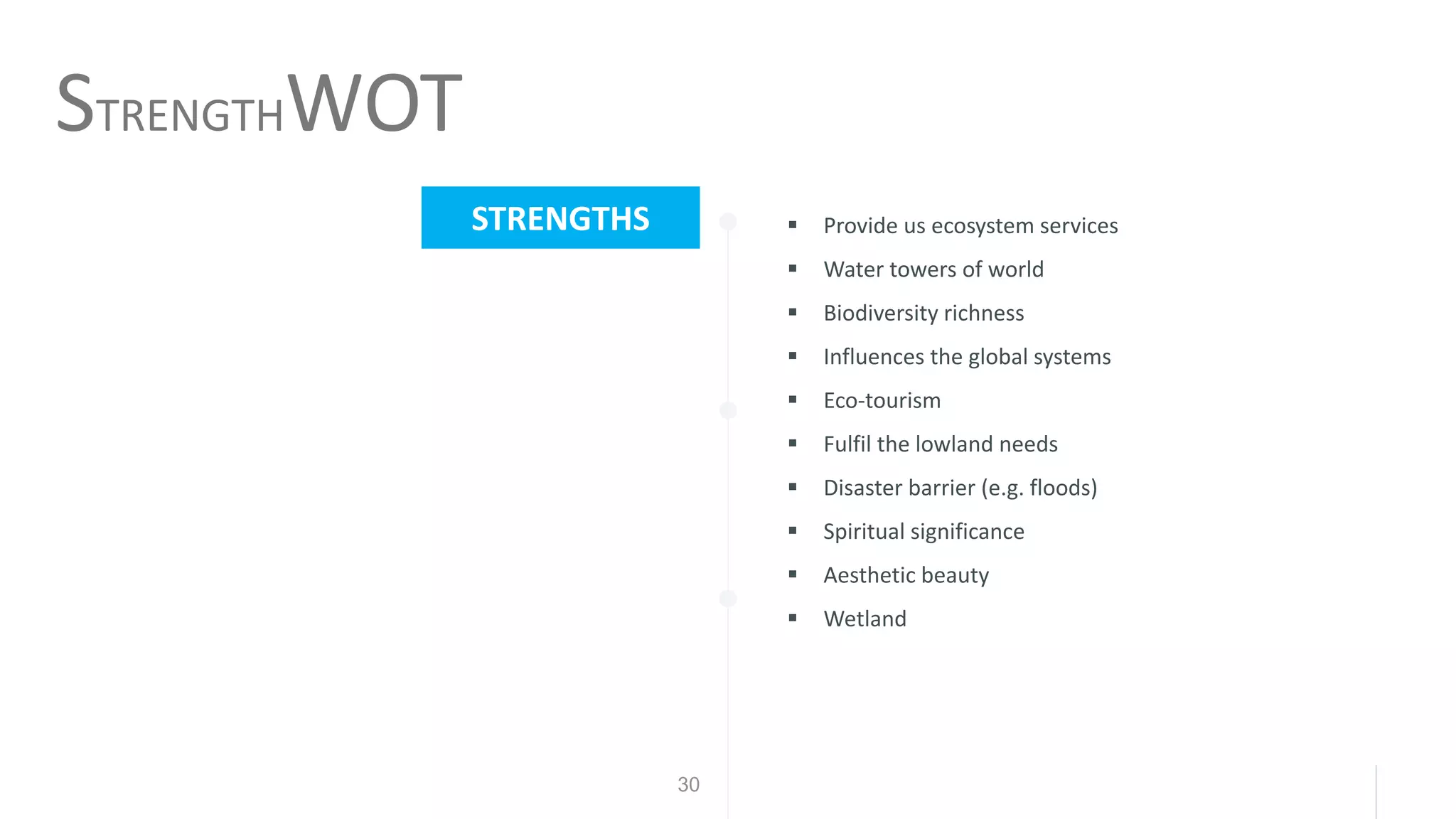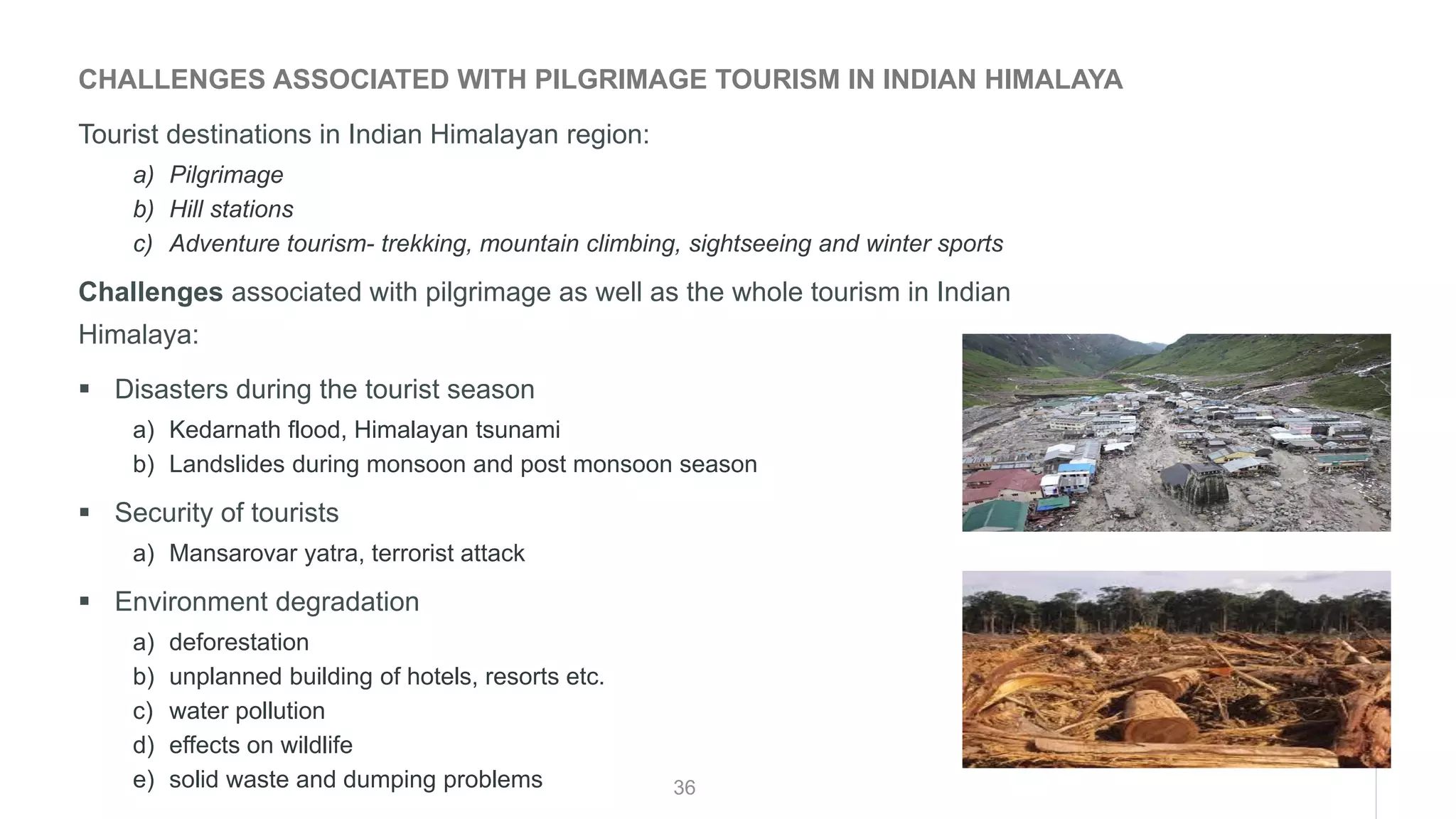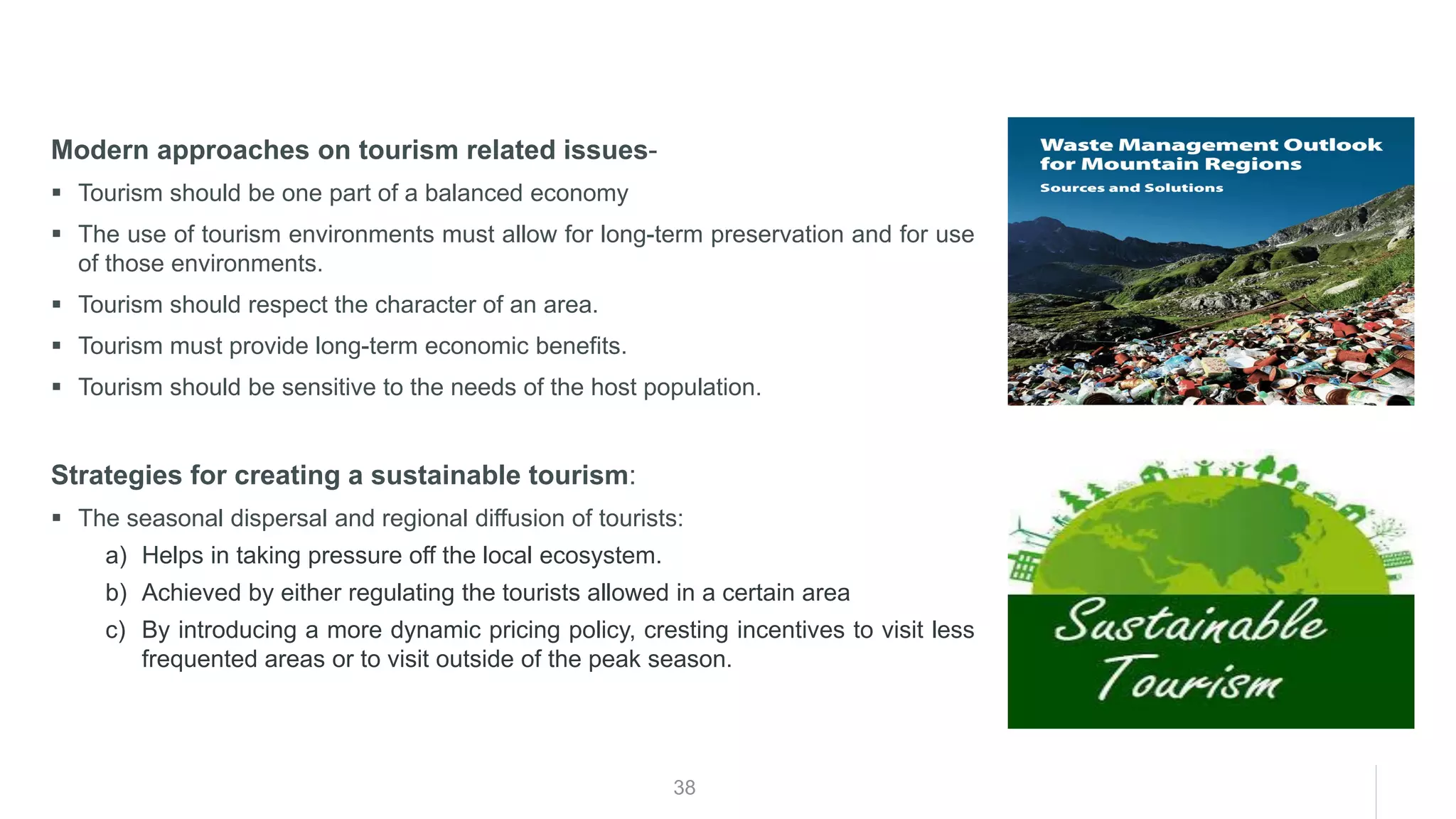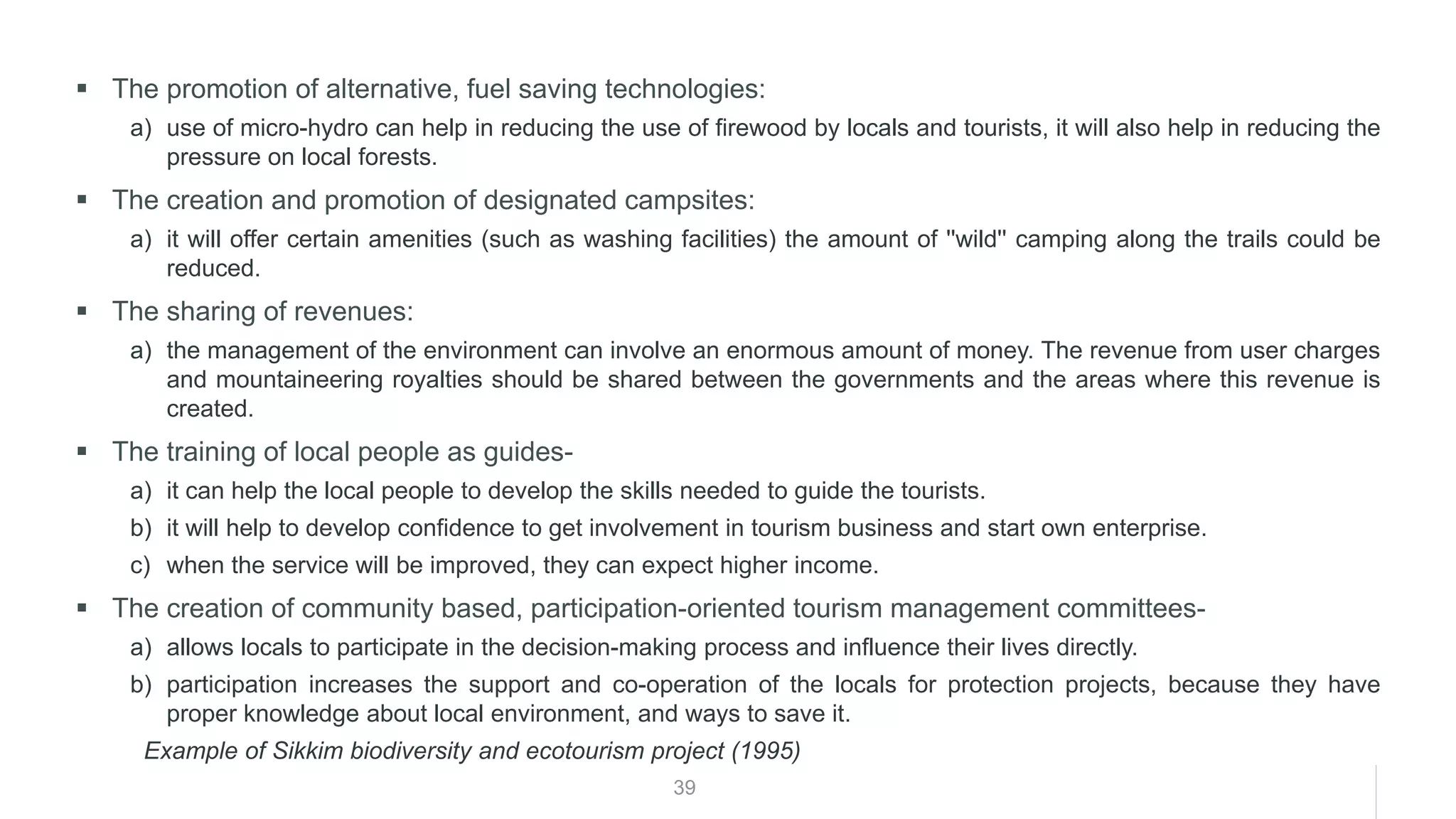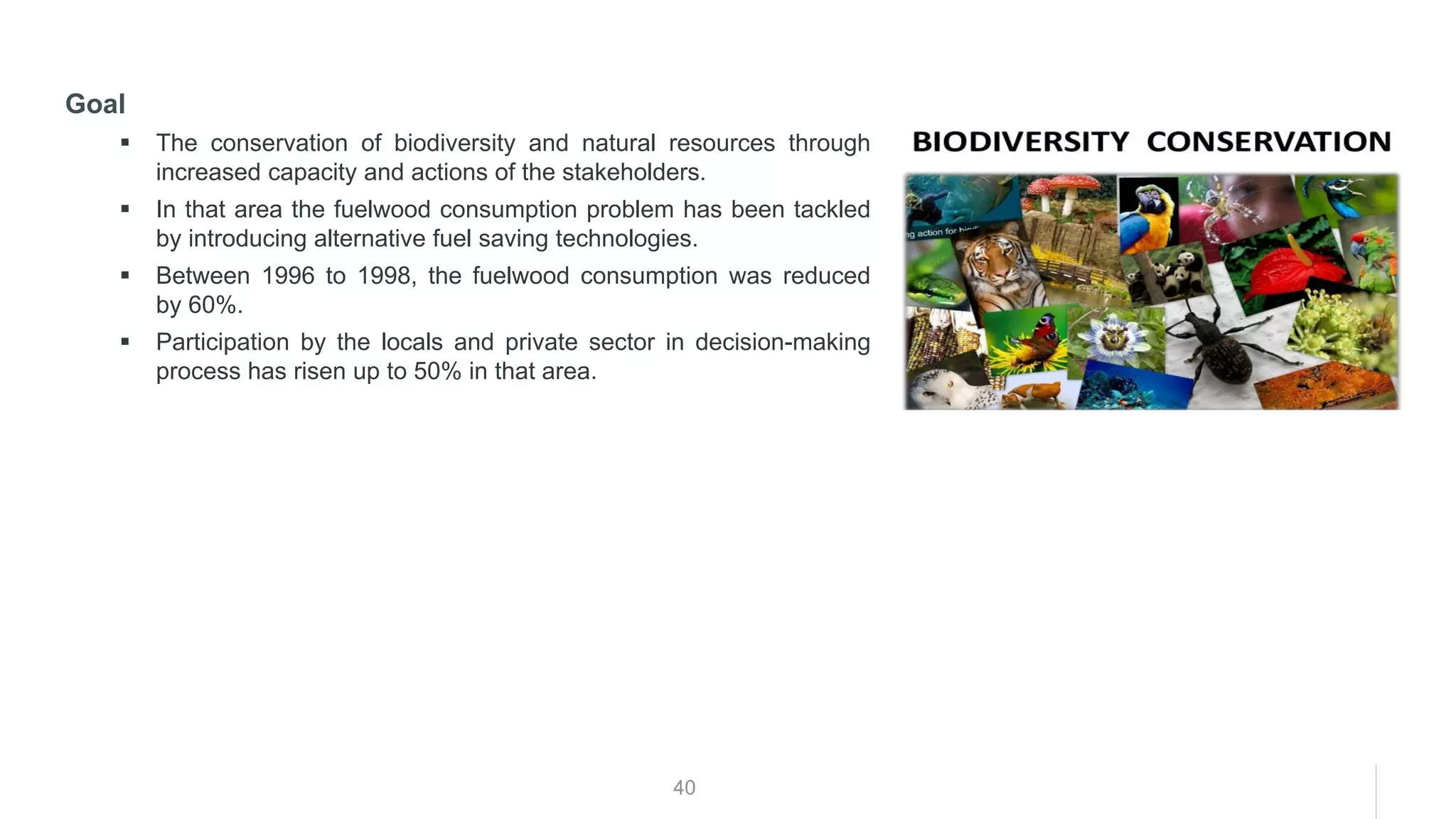The document discusses the significance of mountain ecosystems, emphasizing their aesthetic beauty, biodiversity, and vital resources such as freshwater and timber. It addresses the challenges faced by these ecosystems due to environmental degradation and highlights the interconnections between highland and lowland areas, including social, economic, and political dimensions. Additionally, it promotes sustainable mountain development through global initiatives and the need for effective management strategies to preserve these vital regions.
